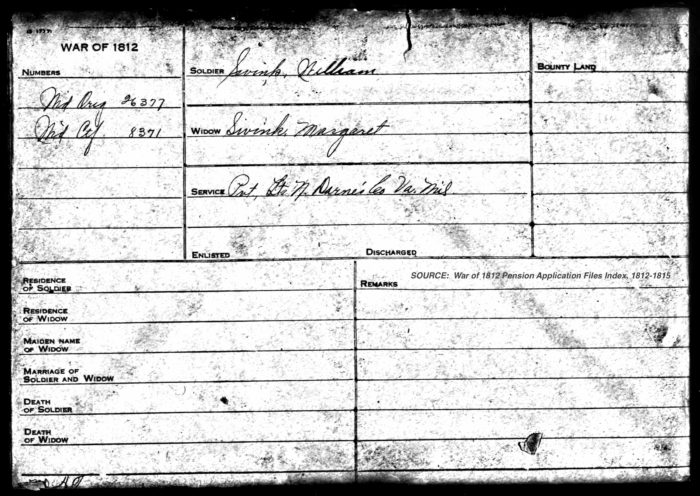NOTE: The documents in this section demonstrate William and his family’s role during a very raw period in our nation’s history. Some of this material is disturbing considering society’s current understanding about the lasting impacts of slavery and its long-lasting effects on race relations.
Spring Hill Farm Notable Facts
Formerly located off Spring Hill Road between Old Dominion Drive and
Lewinsville Road at what is now the Spring Hill Farm housing development.
- The historic Spring Hill farmhouse was erected in 1822.The property originally included two barns – one dating from the antebellum period and another designed in 1890.
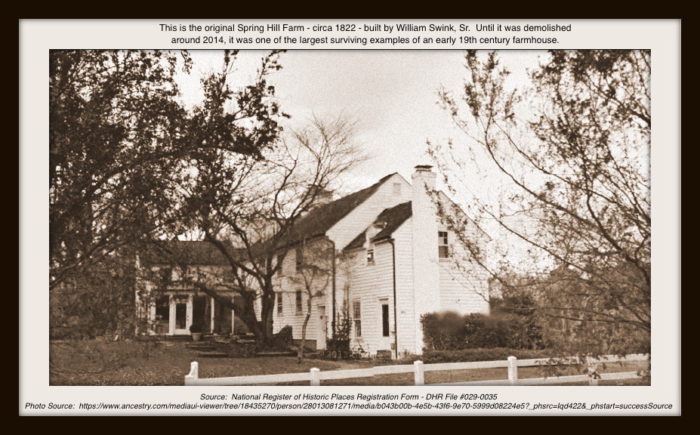

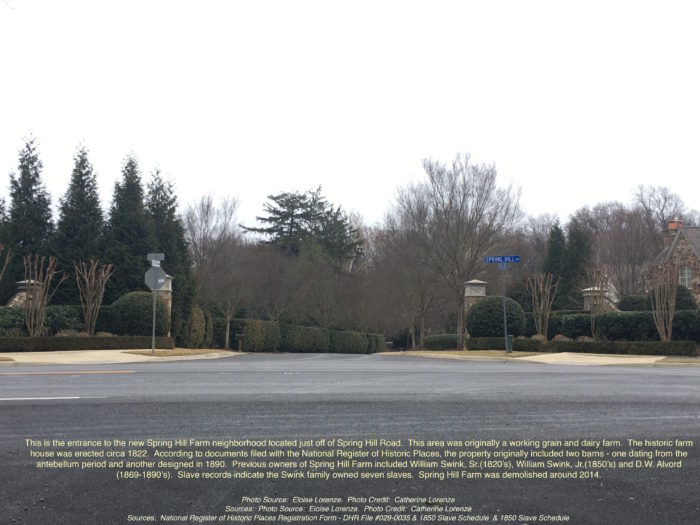
- Spring Hill Farm was once home to a black oak dated at more than 300 years old.
- Previous owners of Spring Hill Farm included William Swink, Sr. (1820’s), William Swink, Jr. (1850’s), D.W. Alvord (1869-1890’s) and his son Henry Elijah Alvord. Census records indicate the Swink family owned seven slaves who worked beside hired hands and Swink family members.
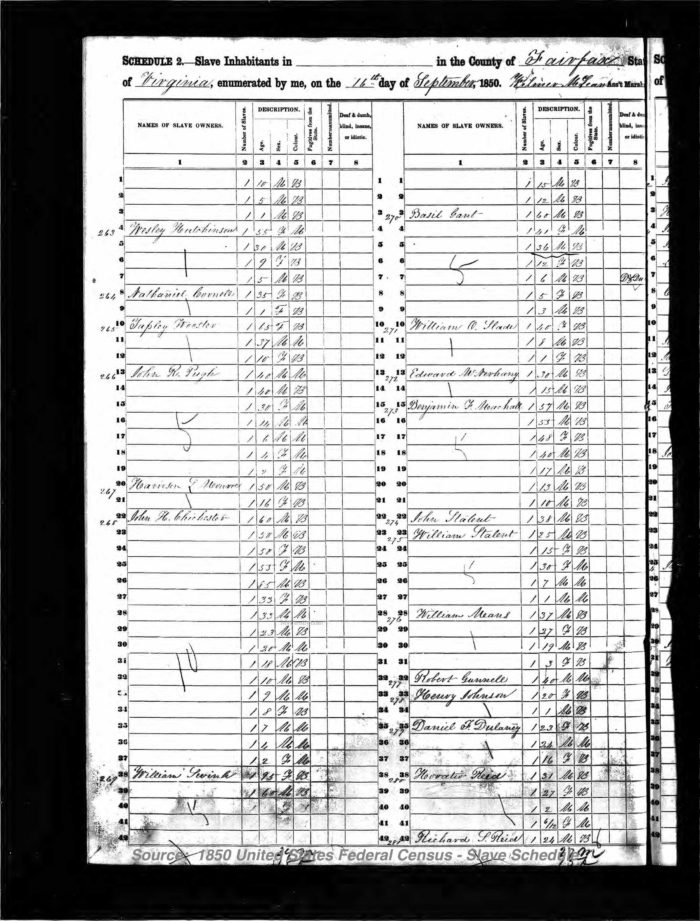
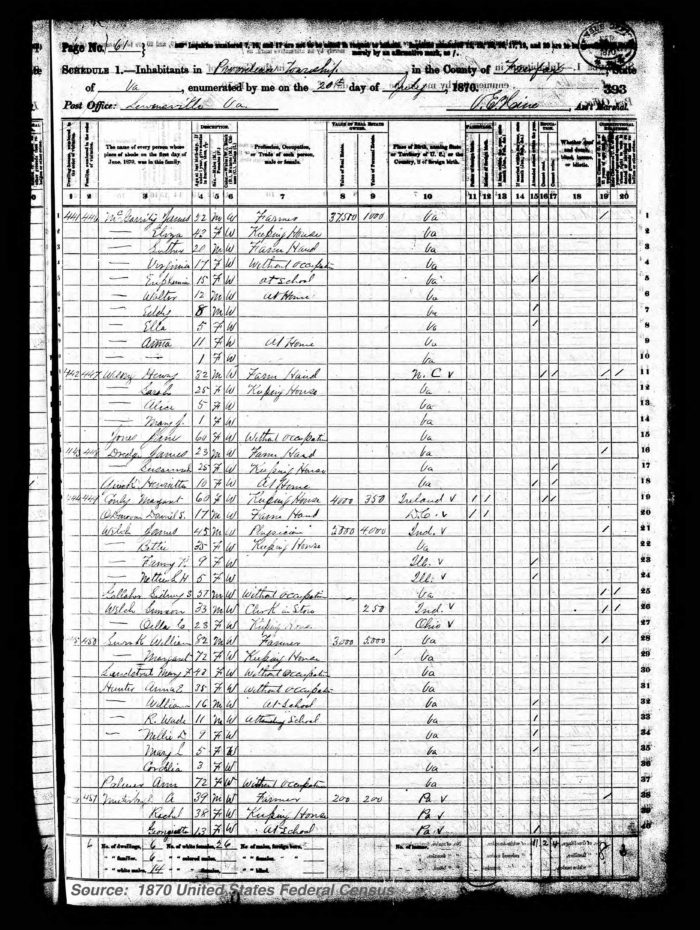
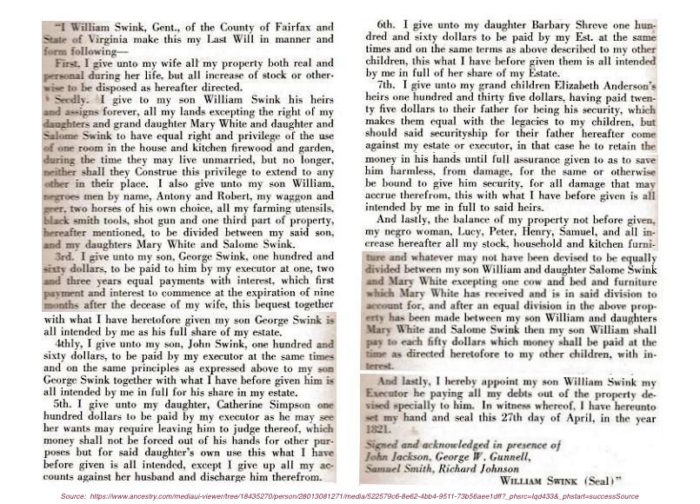
- Former Democratic Governor and now Congressman Don Beyer’s family owned the property from the 1920’s-1940’s.

- William Swink Jr. voted for secession from the Union.According to Swink family legend, the Confederate partisan leader John Singleton Mosby, who led attacks and raids on Union troops in the area, used Spring Hill farm at least once to hide from Union troops who were under orders to capture him.

- William Swink Jr.’s daughter later married eventual Spring Hill Farm owner Henry Elijah Alvord. Formerly a soldier with the Union forces, Alvord also served as a lieutenant in the 10thCalvary – one of the first African-American regiments. Upon returning to Virginia, he further developed Spring Hill Farm’s dairy production output with a herd of Jersey dairy cattle. (Dairy production was prominent in the area following the Civil War. Interestingly from the 1920’s to the 1950’s, Fairfax County was the top producing dairy county in all of Virginia. By 1947, Fairfax County was the leading dairy producer in the entire United States.)


- In 2012, Spring Hill Farms was named to the National Register of Historic Places. Sadly it was torn down around 2014, and two large homes were built on the land that is now part of the development called Spring Hill Farms.

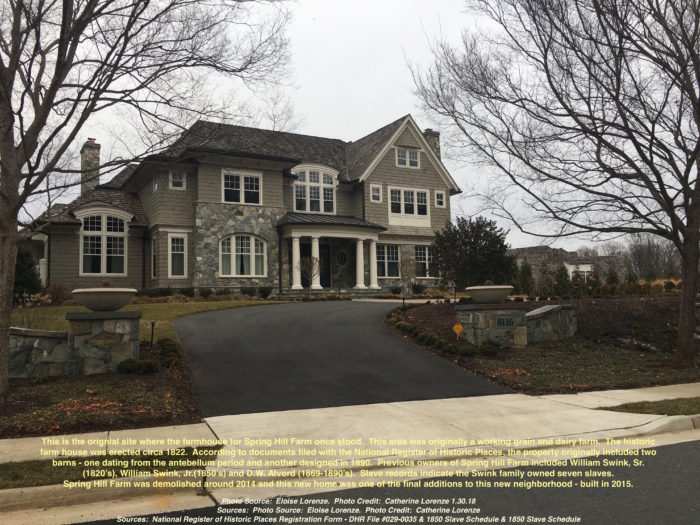
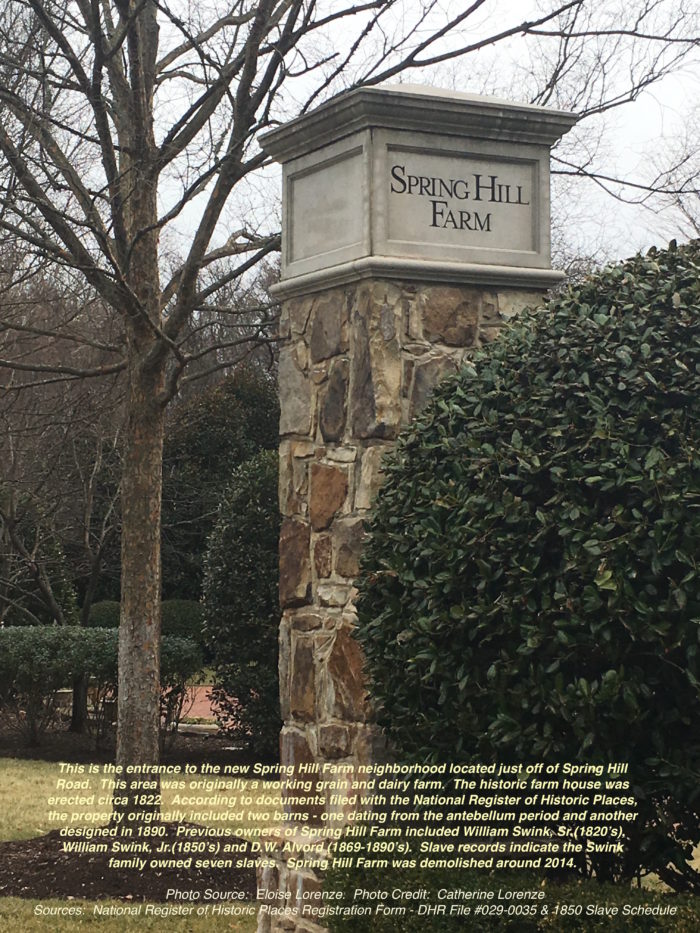
Sources:
- War of 1812 Application Files Index, 1812-1815
- 1850 United United States Federal Census – Slave Schedule
- 1870 United States Federal Census
- National Register of Historic Places Registration Form
- http://www.jchs.harvard.edu/sites/jchs.harvard.edu/files/w04-2_von_hoffman.pdf Donald M. Sweig, “A Brief History of Fairfax County,” Heritage Resources Information Series: Number 1, February 1995, 5-7.
- http://www.connectionnewspapers.com/news/2012/aug/23/story-our-placegreat-falls-virginia/
